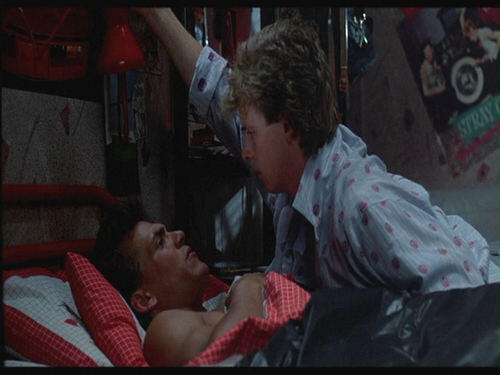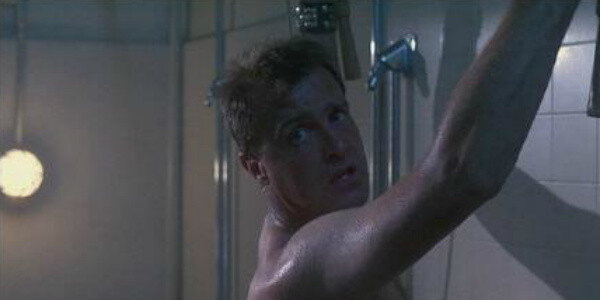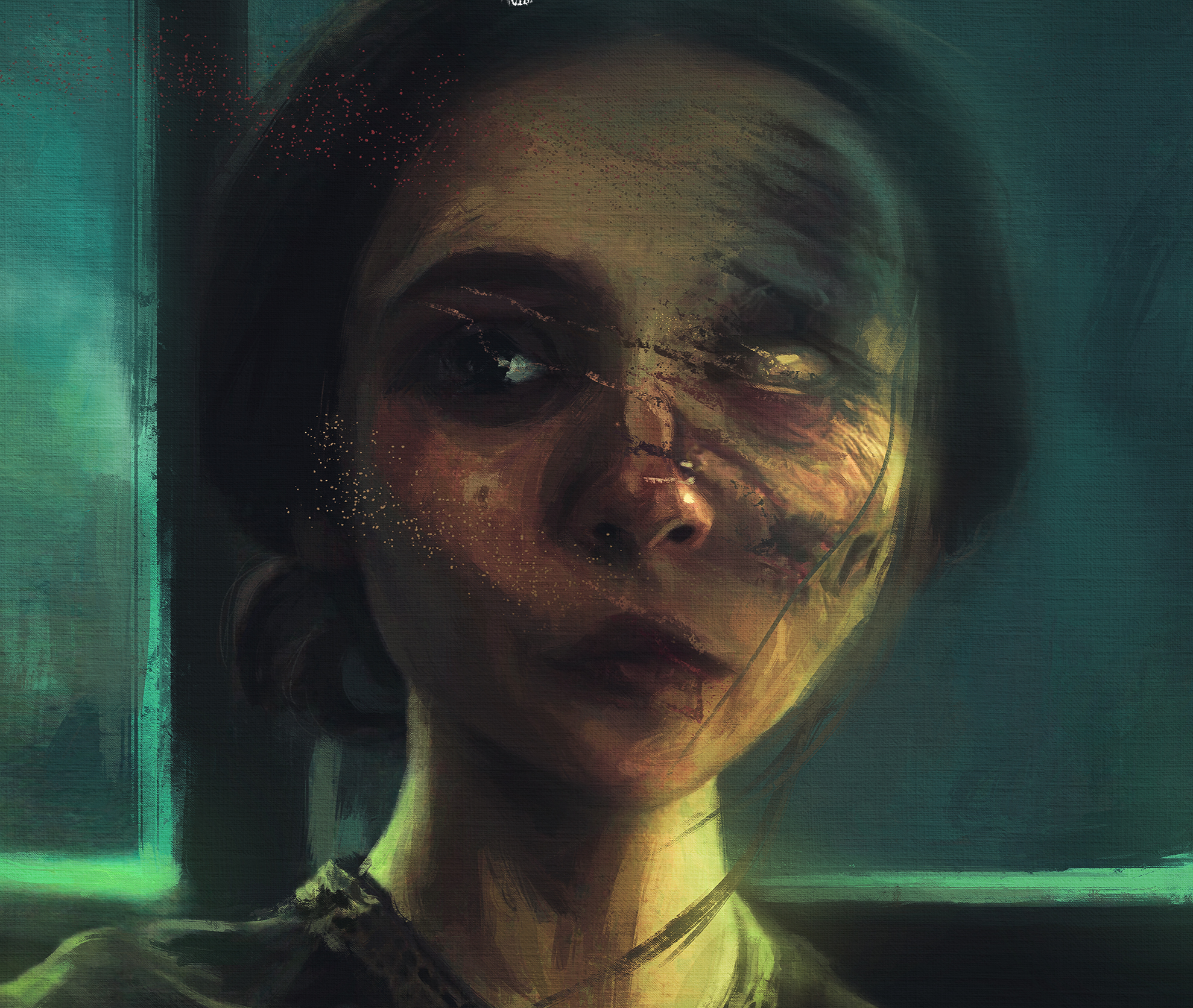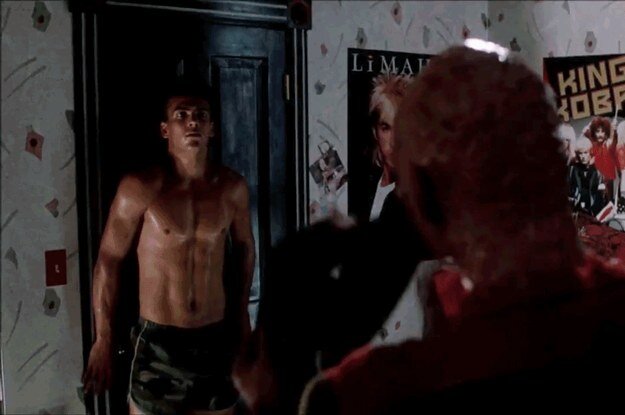Was Freddy’s Revenge About Gay Equality?
Gay Rights and Gay Subtext In A Nightmare On Elm Street 2 (1985)
The Nightmare On Elm Street franchise is one of the most well-known horror brands of all time. Freddy Krueger is infamous for slashing his way through his victims starting in the famous house on Elm Street, leaving some of the most gruesome trails behind. But there is an anomaly present within the Nightmare on Elm Street franchise. The second movie in the series, A Nightmare on Elm Street 2: Freddy’s Revenge (1985), seems much different than the rest of the films…much much different indeed! As fans have pointed out, the gay subtext throughout the second film in the franchise is absolutely undeniable!
Obviously this has left many fans wondering…did the creators of the second Nightmare On Elm Street movie purposely lace the script and movie with gay subtext to help combat or exploit the widespread homophobia of the era?
Often Dubbed One of the Gayest Horror Movies Ever Made
There is no question that the second Nightmare On Elm Street movie is filled with gay subtext. Here are some of the most well known gay inclusions that created the most “homoerotic” horror movie of all time!
A Closeted Protagonist
Mark Patton played Jesse Walsh, the main male protagonist in the story. Patton is openly gay today, but was still ‘in the closet’ at the time the Nightmare movie was filmed. Many of the creators of the film have suggested it could have played a part in the film harboring some ‘repressed homosexuality coming out.’
A Little Male On Male Bonding
During a gym class scene, Grady decides to “depants” Jesse. Jesse chooses to cope with his embarrassment by remaining bare-assed while he tackles and wrestles with Grady on the ground. Jesse is obviously trying to remove Grady’s clothes in this scene for whatever reason.
“Probe” Board Game
The board game “Probe” was placed in Jesse’s closet. Literally in his closet. Ultimately, sadly, it could have been making fun of Patton, who at the time was choosing to remain ‘in the closet’ regarding his homosexuality during the production of the film.
He’d Rather Sleep With Grady

At one point, Jesse is getting it on with his ‘girlfriend’ Lisa, who seems to want to sleep with Jesse. Jesse panics, runs to Grady’s house, where he wishes to sleep instead. Grady himself indicates that it is strange that Jesse does not want to sleep with Lisa, but instead with him.
Attack of the Balls
Balls, that’s right, actual balls attack Coach Schneider in his office…flying out of their containers and respective bins seemingly on their own. Tennis balls, basketballs, soccer balls, all kinds of balls. Balls, everywhere. Some fans have suggested this was a reference to testicles and count it as gay subtext.
A Gay Conspiracy
Rumors had surfaced nearly instantly about a conspiracy to riddle the plot with gay subtext that would be acknowledged by the audience, but still be deniable. David Chaskin is a Freddy’s Revenge screenwriter who denied including planned gay subtext throughout the film for a really long time (decades of denial). Chaskin finally began to admit that the gay subtext was planned only in recent years. When questioned as to why he remained silent, he revealed that it felt like his film was being “outed” and he was unsure how he felt, and so he kept quiet. Ultimately Chaskin admitted to having long thoughts about the homophobia stigma at the time and how he could work a script that would cause the cast, and ultimately the audience, to question their sexuality.
Similarly, the director of the box office hit, Jack Sholder, claimed he had no knowledge of planned gay subtext for a really long time. Still there were many rumors floating around about Sholder very well understanding the movie was fostering some gay themes. In modern days, Sholder absolutely acknowledges the gay subtext throughout the film, but still denies having realized it during production. Sholder also claims to not have known Mark Patton was gay at the time of production (Patton was indeed still in the closet).
“No Chicks” Allowed
A sign posted on the outside of Jesse’s room at the Walsh residence upstairs basically reads “NO CHICKS.” Whether this was done intentionally or not, it is hard to miss and hard not to associate with gay subtext. What senior high school boy isn’t interested in chicks being in his room…besides a gay one? Try to remember: in the 80s, there was a ton of homophobia, and it was really hard to come out, so this type of sign meant a lot more back then!
A Man Is Trying to Get Inside Of Me!
All throughout the film, Jesse is concerned with a man that is “trying to get inside” of him. While this may be innocent in scripting sense, one cannot deny how closely it mimics some of society’s most popular dirty talk.
A Sexually Confused Protagonist
Although the actual real life actor who played Jesse is gay, the character Jesse also seems to be troubled as far as his sexual orientation is concerned. Jesse seems reserved when it comes to his ‘girlfriend’ and almost unwilling to participate in their relationship. He seems more eager to hang out with his bully/friend and sports jock, Ron Grady. Jesse seems to be struggling with his sexuality throughout the entire film.
Penis Shaped Wall Art
Seriously, check it out, in the kitchen of the Walsh residence there is a strange penis shaped wall art object. This has been admitted to be a joke by the crew of the set…but still, no doubt gay subtext.
Don’s Place, The Gay Bar

Jesse Walsh is seen in one part of the movie showing up to a gay bar called “Don’s Place” in the middle of the night. He orders a drink and is approached by Coach Schneider, who is outfitted in some pretty extreme leather, definitely S&M attire. The coach seems super excited to see Jesse, smiling nonstop and the scene crosses over to the high school gymnasium, where the coach has Jesse running laps presumably as punishment for being caught drinking underage (though probably to get him in the showers – where Jesse ends up having to go when he’s done jogging).
Coach Schneider’s Shower Room Whipping
Typically, all victims die in spectacular fashion within the Nightmare films. However, there was one truly disturbing death in Freddy’s Revenge, that being the death scene of Coach Schneider. And although many of Freddy’s attacks and kill scenes in a lot of his films can be a little ‘adult’ in nature, it is arguable Coach Schneider’s death is on the more extreme end of the scale.
Freddy uses gymnasium equipment to drag Coach Schneider into the shower room and tie him up, leaving him bound and helpless. Jesse, the main protagonist is onlooking as Freddy (invisible at the time and working through the mind and body of Jesse), strips the coach naked and begins whipping him to death with a towel. Most of the whipping seems to be focused on his butt. Oh, and the showers are on.
Final Analysis of Nightmare On Elm Street 2: Freddy’s Revenge
Many of the creators of the film will deny the gay subtext being intentional, insisting there was nothing in the script directly to support such a claim. Still, anyone who watches A Nightmare On Elm Street 2: Freddy’s Revenge (1985) cannot deny the very obvious homoerotic vibe present flamboyantly in nearly every other scene. The film’s gradual progression into becoming the gayest horror movie of all time, was probably a combination of the main protagonist himself being a closeted gay in real life, as well as the cast, crew and creators dealing with the homophobia of the time. No doubt though that it all adds up making the second Nightmare On Elm Street, Freddy’s Revenge, full of obvious gay subtext.

Tritone’s love of horror and mystery began at a young age. Growing up in the 80’s he got to see some of the greatest horror movies play out in the best of venues, the drive-in theater. That’s when his obsession with the genre really began—but it wasn’t just the movies, it was the games, the books, the comics, and the lore behind it all that really ignited his obsession. Tritone is a published author and continues to write and write about horror whenever possible.



2 replies on “Was the Second Nightmare On Elm Street About Gay Rights?”
That is not about gay rights. There is no question the gay overtones were intentional, but also there should be little doubt that the movie comes from homophobia and presents homosexuality as an evil to be fought against. That they denied the “under”tones for so long and that the writer even blamed the actor for being too gay and making the movie “seem” gay (and later acknowledging he had lied about those overtones not being intentionally written into the movie) is homophobic enough in itself. Regardless of that, the movie itself makes sure to bolster the idea that being gay is bad and being straight is good.
The intentionality of the gay overtones is shown starting from the casting. They clearly cast someone who is obviously more feminine than the typical male lead of the time. Let’s remember he was selected from many that wanted the role after the first one made Johnny Depp famous. They might not have known Patton was gay, but they did think he looked gay or was more feminine than the norm–as the actor has stated, they made fun of him on set for it. Once in the movie, they make him scream like the cliche of a girl would. It would be naive to think this was accidental, especially for a movie from the 80s. I don’t know if that was clearly stated on the script, but even if it was, the director made sure to make it seem he screamed “like a girl”–a homophobic prejudice, especially for the time. When he screams after being “healed” from Freddy, you can’t really tell if he’s screaming the same way as he he screams next other girls.
Still, the “gayness” shown in the movie is obviously not representation, it rather reinforces the notion that homosexuality is an evil. Notice how they make sure that Freddy only comes out truly violently in homoerotic scenes. First, a gay coach in kinky leather in the showers with all that steam; later, alone in a room sleeping next to Grady, the semi naked hot hunk he spends more time with than with anyone else (who by the way is barely shown with a girl even in a genre so obsessed then with heterosexual sex and topless girl scenes; and even in a movie that makes sure to show that EVERYONE else but them two and someone else I’ll talk about later are constantly enjoying heterosexual activities).
Even when things go crazy in the party (to have a higher body count in an otherwise slow movie), you could say there is some homoeroticism with all the hot shirtless men and Freddy specifically ripping shirtless men apart, not women. The only graphic bloody scenes are with men if you add the shirtless man being trampled by others as they try to escape. I wonder if sweaty and wet shirtless men moaning and bleeding are actually more of a hidden kink of the filmmakers that they had a chance to indulge in through the movie. Regardless, there definitely was a focus on that.
Add to all this that when Jesse was feeling that the evil in him was approaching, he ended up in a gay bar for some odd reason. Yes, the evil thing inside him drives him to a gay bar, a place he wouldn’t visit otherwise. To go to that length to show a gay bar and then show the coach in leather and then improbably sending them that night to the steamy showers (without the coach changing) is no naive accident. Let’s note here also that the movie presents the coach as sort of bad from the very first sene, having a kick in making young kids sweat, then showing him in a gay bar (which is presented as a place where a possessed person would automatically go to) and having him punish the kid in the middle of the night in a situation where he had no jurisdiction. The only openly gay person in this movie is shown as a bad guy. His punishment is death by his own evil(?) gay BDSM tendencies.
Also notice, I think you didn’t mention this, that when Jesse wanted to prevent Freddy from coming back, he started taking pills that were blatantly called STR-UP!!! Moreover like you said, the writer explicitly made a scene that recalled a closeted gay guy having trouble having sex with his girlfriend, and the director was sure to frame it and the Lisa’s frustration just like that. Then there is all gay subtext, some of which you mentioned (“no girls allowed”, Jesse lip syncing and dancing Touch Me All Night Long, the high pitched screams, the father not taking him as a “real man”, the adults having happy heterosexual sex lives, the constant presence of shirtless sweaty men, the relatively more blatant camp from Freddy, Freddy barely touching women, constant homoerotic scenes that were otherwise unnecessary between Jesse and Grady).
How is Freddy stopped? When Jesse decides to choose Lisa. He had her from the beginning, but he had been dismissive of her from the very start. He spends more time with his hot male friend Grady while beautiful perfect Lisa is constantly after him only to be constantly neglected. Everything is fixed when Jesse fights his inner evil (Freddy, Homosexuality), and ultimately ignores Freddy (his “sexual confusion”, his homosexuality) by deciding to accept Lisa’s love and love her back. He could have ignored her or let himself be convinced by Freddy (or his gay impulses) to go with the flow of what was inside him, but Lisa believed that he could reject Freddy (his homosexuality), and he ultimately does.
Even in the last scene which was just a necessary “is Freddy really gone?” scene, they manage to be consistent with the theme of homosexuality as an entity of evil. They make sure that Freddy doesn’t appear in him (he can be healed!), but in his girlfriend’s female friend Kerry. If you look back, Kerry constantly appears around Lisa instead of with a boy (as opposed to basically every other girl in the movie).There is a scene where Kerry and Lisa kiss in the pool, albeit on the cheek–but still a moment that was otherwise unnecessary. While everyone in the party is with a couple, Kerry is by Lisa. It is no accident that clearly straight Lisa is dressed up as a nice feminine girl, but Kerry is dressed less feminine. In the last scene, Kerry is seen single, in between the now happy heterosexual couple. The only girl in the movie with possible lesbian vibes is the one that has Freddy insider her now.
For a movie that seems so rushed and and incompetent in pacing, dialogue, mood and character, they went at great lengths to be consistent with the theme that the evil inside to defeat is homosexuality. They even propose it can be healed if only you can silence it, reject it, and choose heterosexuality.
We can praise Patton’s portrayal in the movie written for him with gay overtones as a sort of unique representation in a time where there was barely any. We can make him a gay icon. But we should acknowledge that both the writing and the directing came from at least a latent homophobia. I would argue it was much more than latent at least in the writing.
Thanks for the thoughtful reply and perspective. I’ll pass this along to the author of the story as well.